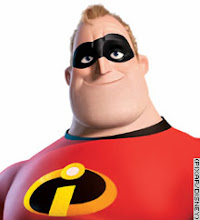Shutter speed has the following influence on Pictures:
1) Exposure (refer to the topic on Exposure ~ click here)
2) Changes the way movement appear in a picture
Shutter speed is influenced by:
1) Luminance (intensity of light)
2) Film Speed
3) Aperture
In order to better understand the way shutter speed influences movement, have a look at the following pictures:
How do I apply this to my photography?
When considering what shutter speed to use in an image you should always ask yourself whether anything in your scene is moving and how you’d like to capture that movement.If there is movement in your scene you have the choice of either freezing the movement (so it looks still) or letting the moving object intentionally blur (giving it a sense of movement).
To freeze movement in an image you’ll want to choose a faster shutter speed and to let the movement blur you’ll want to choose a slower shutter speed.
To freeze movement in an image you’ll want to choose a faster shutter speed and to let the movement blur you’ll want to choose a slower shutter speed.
The actual speeds you should choose will vary depending upon the speed of the subject in your shot and how much you want it to be blurred.
Focal Length and Shutter Speed - another thing to consider when choosing shutter speed is the focal length of the lens you’re using. Longer focal lengths will accentuate the amount of camera shake you have and so you’ll need to choose a faster shutter speed (unless you have image stabilization in your lens or camera).
Focal Length and Shutter Speed - another thing to consider when choosing shutter speed is the focal length of the lens you’re using. Longer focal lengths will accentuate the amount of camera shake you have and so you’ll need to choose a faster shutter speed (unless you have image stabilization in your lens or camera).
The ‘rule’ of thumb to use with focal length in non image stabilized situations) is to choose a shutter speed with a denominator that is larger than the focal length of the lens. For example if you have a lens that is 50mm 1/60th is probably ok but if you have a 200mm lens you’ll probably want to shoot at around 1/250.
Refer to your user manual in order to find and use the Shutter Priority setting.
Canon: Setting Tv
Nikon: Setting S

When the shutter speed is set to 125, light comes in for 1/125th of a second.
When the shutter speed is set to 8, light comes in for 1/8th of a second.
The bigger the denominator the faster the speed (ie 1/1000 is much faster than 1/30).
In most cases you’ll probably be using shutter speeds of 1/60th of a second or faster. This is because anything slower than this is very difficult to use without getting camera shake. Camera shake is when your camera is moving while the shutter is open and results in blur in your photos.

In this picture a medium shutter speed was combined with panning. Panning is when you move the camera in the direction of the movement while taking the picture. This gives background blur while freezing the motion of your subject.

A high shutter speed ensured that the fast moving car's motion was frozen.

A slow Shutter Speed was used here to create the trails of light as the cars passed by.
 Another example of a medium shutter speed combined with panning.
Another example of a medium shutter speed combined with panning.
Quick Start
How do I set this on my camera? For now we will use the Shutter Priority mode on your camera. This will allow you to set your aperture and have the camera adjust the other variables for you in order to achieve a correct exposed picture.Refer to your user manual in order to find and use the Shutter Priority setting.
Canon: Setting Tv
Nikon: Setting S

When the shutter speed is set to 125, light comes in for 1/125th of a second.
When the shutter speed is set to 8, light comes in for 1/8th of a second.
The bigger the denominator the faster the speed (ie 1/1000 is much faster than 1/30).
In most cases you’ll probably be using shutter speeds of 1/60th of a second or faster. This is because anything slower than this is very difficult to use without getting camera shake. Camera shake is when your camera is moving while the shutter is open and results in blur in your photos.
More Examples:

In this picture a medium shutter speed was combined with panning. Panning is when you move the camera in the direction of the movement while taking the picture. This gives background blur while freezing the motion of your subject.

A high shutter speed ensured that the fast moving car's motion was frozen.

A slow Shutter Speed was used here to create the trails of light as the cars passed by.
 Another example of a medium shutter speed combined with panning.
Another example of a medium shutter speed combined with panning. Additional Reading
Read more about the bulb (B) setting on your camera.





